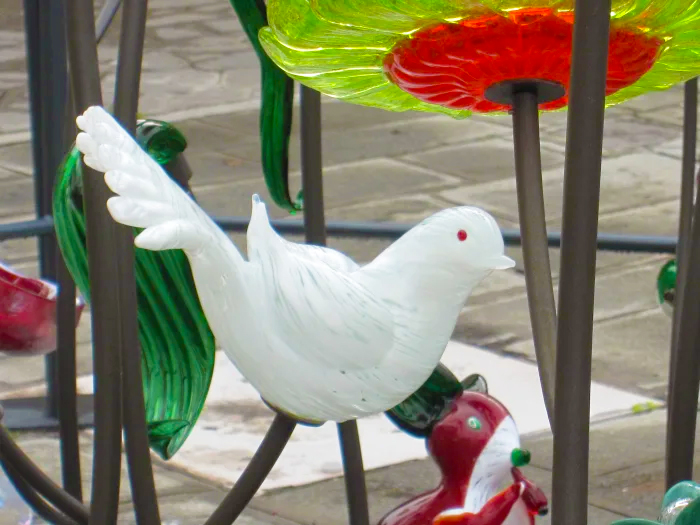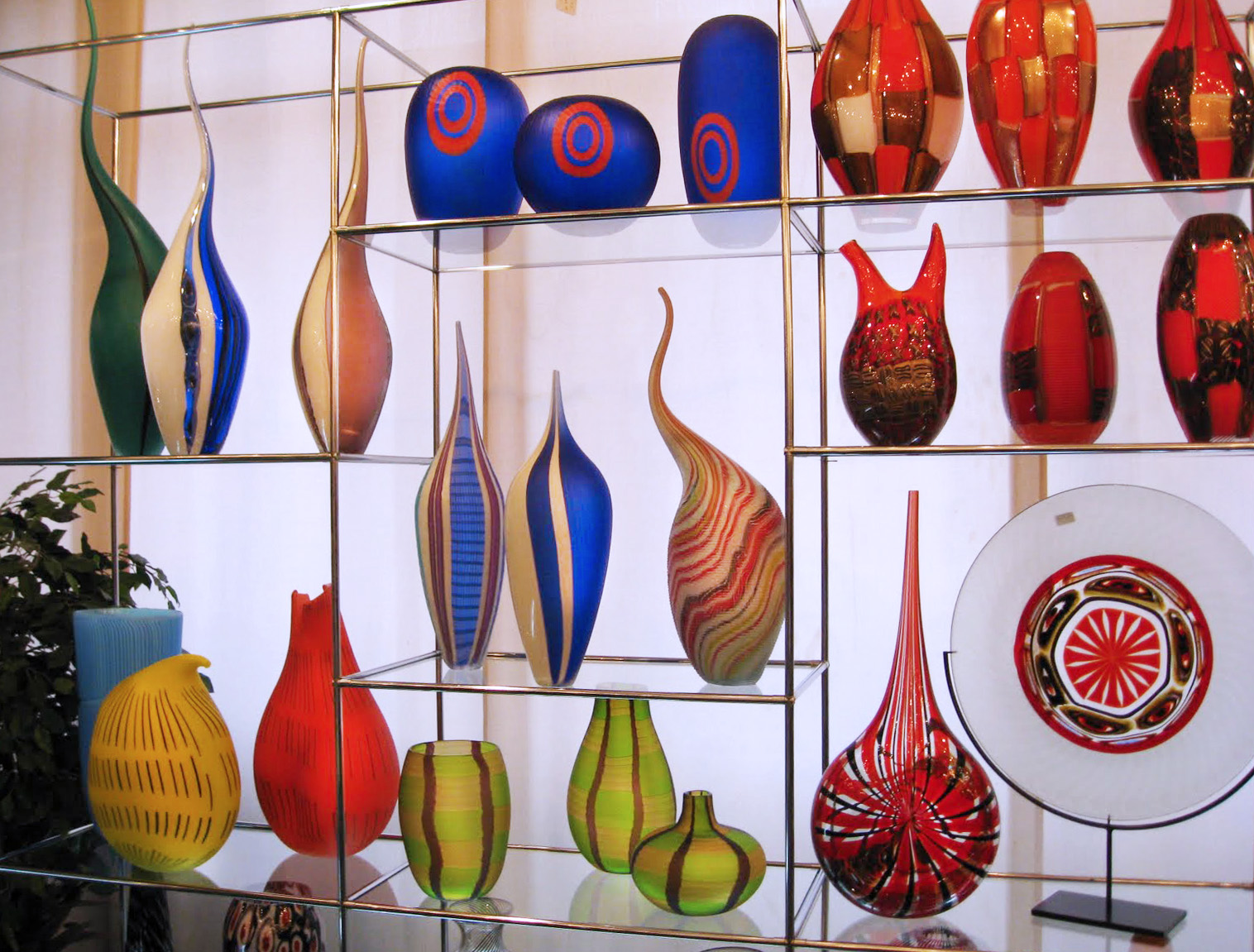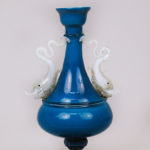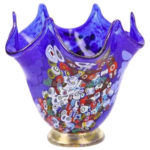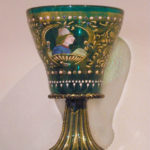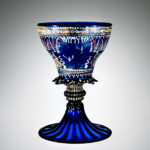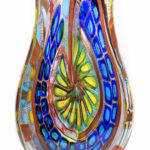Although glass is made in numerous locations in Italy, when it comes to historic significance, it is Venice that has been at the forefront. Venetian glass is believed to have been made for over 1,500 years. During the time of the Roman Empire, Venice produced molded glass used to allow light to enter its bathhouses. Venice emerged as a prominent glass-manufacturing center as early as the eighth century. One of the earliest glass furnaces on a Venetian island, dating to that century, was discovered by archaeologists in 1960.
By the late 13th century, the production of glass objects of the finest quality was the city’s major industry as confirmed by the establishment of the Glassmakers Guild that laid out rules and regulations for the craftsmen. In 1291, La Serenissima, as the Venetian sovereign state was then known, ordered all glass-makers working in the old town to move to the island of Murano on the lagoon, as they had caused too many fires in the city. Historians believe that the true motive was to isolate the glass craftsmen to a location where they would not be able to disclose trade secrets.
Murano is actually a cluster of islands linked by short bridges, located one mile north of the Venetian mainland. It has a long history of innovations in glassmaking in addition to its artistic fame and was Europe’s major glassmaking center from the Middle Ages through the Renaissance. Glass beads were made by the Venetians beginning in the 1200s, used as rosary beads and jewelry. Christopher Columbus noted that the native people of the New World were delighted with the beads as gifts and they became popular with the natives.
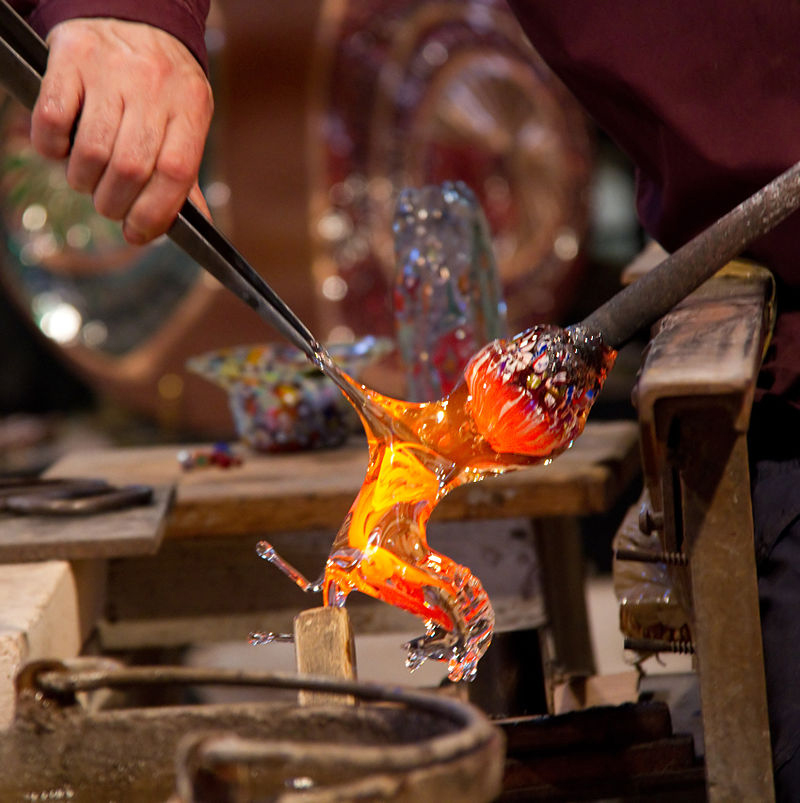
The Venetian government encouraged glassmakers to carry on the trade through generations, ensuring their secrets stayed in the families fueling the creative processes, leading to innovation and further success. Along with Venice’s convenient location at the crossroads of trade between East and West, Venice developed monopoly power in manufacturing and selling quality glass throughout Europe that lasted for centuries.
The peak of Venetian glass popularity was reached during the Renaissance. In the 15th century, master glass maker Angelo Barovier discovered the process for producing clear glass, which he called cristallo. This allowed Murano glassmakers to become the only producers of mirrors in Europe. In addition, the popularity of Chinese porcelain among European nobility fueled discovery and production of the white glass called lattimo which mimicked the luster and sheen of porcelain.
Other types of glassmaking techniques became popular such as enameling and gilding glass, which were perfected in Venice. Filigrana glass, made using glass rods with inner threads of white, golden or colored glass that are twisted or intersecting and ice glass which appears finely crackled, were two other popular forms of glass developed during this era. The variety of shapes and colors increased and glassware became more sophisticated, though the beauty was still viewed as the simplicity of shapes and ornaments.

Beginning in the 17th century, Murano glass entered the period of gradual decline. As the Venetian grip on trade routes and its importance as a major center of commerce began to vanish, so did its monopoly in glassmaking. Yet the 17th century still saw innovation in Murano glass, as new techniques continued to emerge driven by strong Baroque trends that spread through European architecture, painting, interior decoration and other art and forms.
Brightly colored, intricate glass decorations with floral and animal motives became popular. New glass techniques included avventurina, which had metal flecks embedded in glass for a sparking appearance and calcedonio, which gave the illusion of semiprecious stones. It was during this period that raised decorations on glass were developed, as well as millefiori beads. These new sophisticated techniques centered on the high end of the market and many of the royal courts of Europe ordered glassware from Murano artisans.
During the 18th century, the decline continued, aggravated by worsening political climate and increased competition from glassmakers abroad. The industry contracted dramatically with Napoleon’s conquest of Venice in 1797 and his abolishment of all of Venice’s guilds, including the glassmakers.
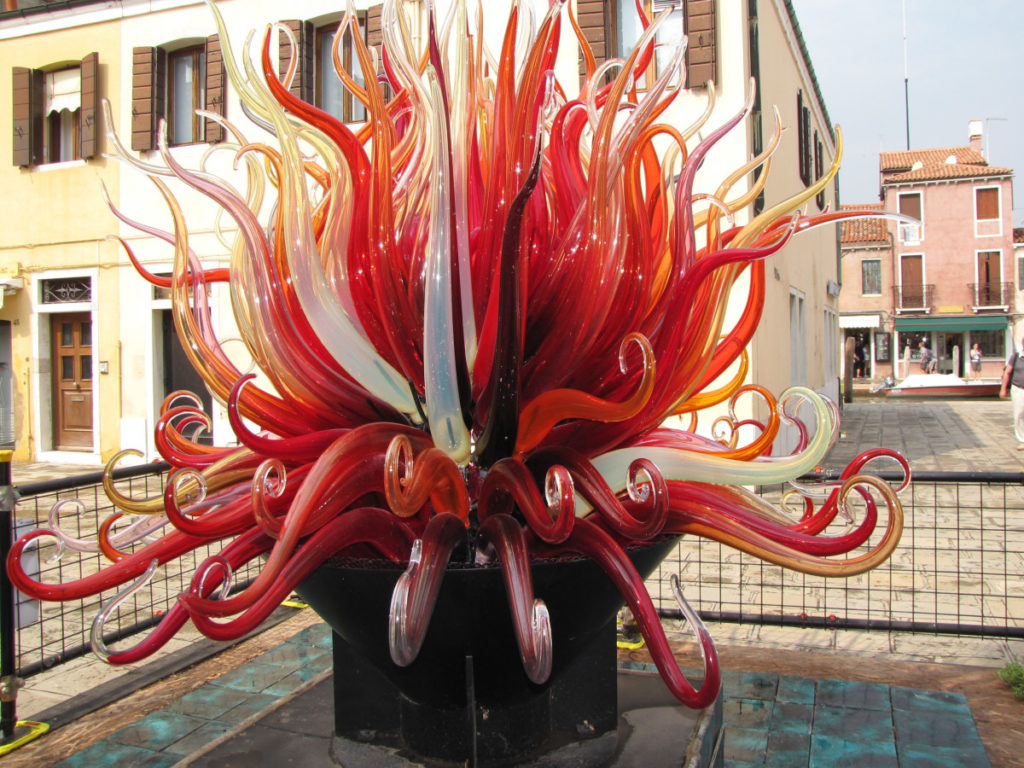
When Venice became part of the Habsburg Empire in 1814, it nearly wiped out the industry. The new rulers passed laws making it expensive to bring necessary raw materials into Murano and export the final product. Almost half of the 24 furnaces that existed in Murano in 1800 shut down by 1820 and only five furnaces continued to produce blown glass. Against all odds, the industry was kept alive by the artisans’ dedication to their centuries-old craft.
Rome Celebrates 2,774 Birthday
A breakthrough came in 1854, when the Toso Brothers opened the firm Fratelli Toso, reviving the techniques of the past. Five years later, Antonio Salviati, a wealthy lawyer from Vicenza, came to Venice to open a factory dedicated to the production of traditional Murano glass. He saw an opportunity to revive the craft by producing tiles that could be used to restore old Venetian mosaics and he hired the best Murano masters to work in his factory. His plan worked and Venetian authorities soon signed a fifteen year contract with his firm for restoration of the mosaics in Saint Mark’s Basilica.
In 1861, Mayor Antonio Colleoni and Abbot Vincenzo Zanetti compiled an archive dedicated to the history of Venice including objects of art produced in the city. This led to a renewed interest in Venice’s glassmaking. A school for glassmakers was established where students were able to learn the nearly forgotten techniques and secrets of the craft.
1895 was the year of the first Venice Biennial Exhibition. New works of art in avant-garde and art nouveau styles were showcased, which began a new trend in the glass art form. In the 1920s, modern styles with simpler, cleaner and more functional designs came into vogue. The post-war years saw a return to the art forms of the past, with artisans using techniques such as filigree, murrino and lattimo. From that point onwards Murano saw continued exploration of styles and techniques, exhibiting a technical mastery that once again made the island the ‘glassblowing capital of the world.’
